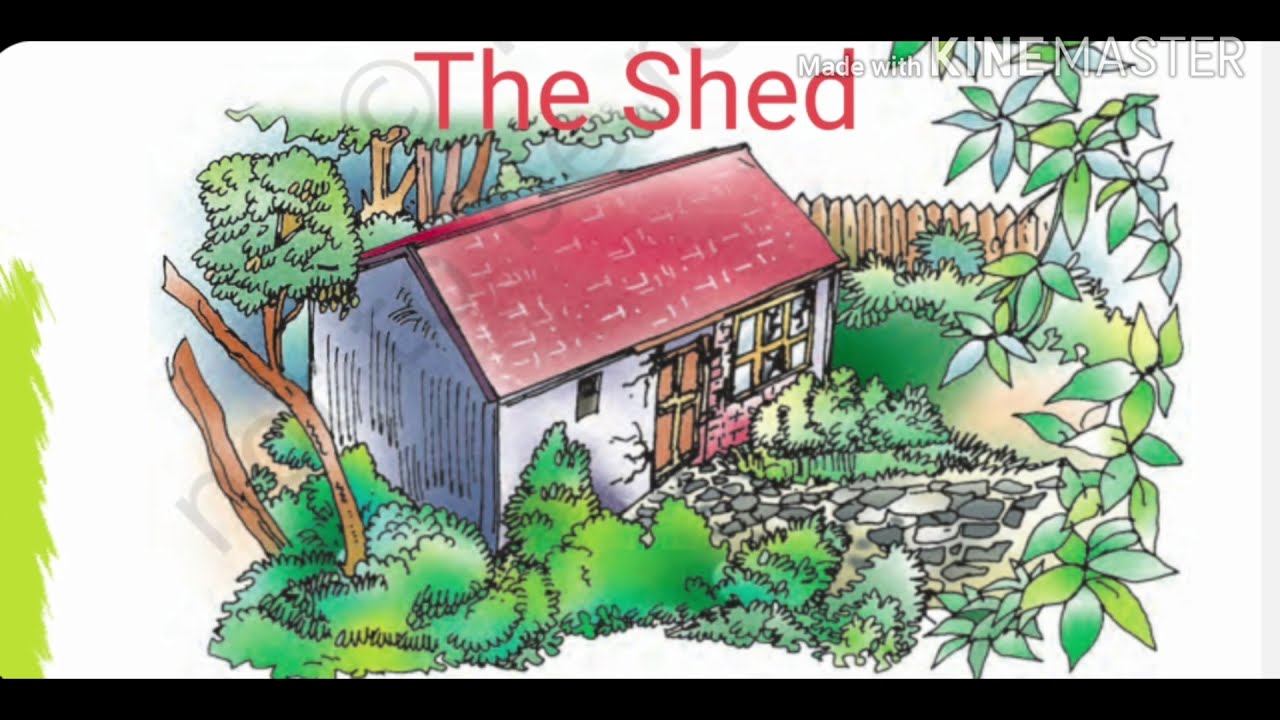
About Lesson
“The Shed” by Frank Flynn
Introduction:
- The poem “The Shed” is about a young child’s curiosity and fear regarding an old, neglected shed in their garden.
- It explores themes of imagination, fear, and bravery.
Key Points:
-
Description of the Shed:
- The shed is located at the bottom of the garden.
- It is depicted as old and neglected, with a spider’s web hanging across the door and rusty hinges that creak in the wind.
- The poet often lies in bed, listening to the sounds of the shed and thinking about opening the door someday.
-
The Window:
- There is a dusty old window with three cracked panes of glass on the side of the shed.
- The poet feels as though someone is staring at him each time he passes by the window.
- He plans to peep through the window one day to satisfy his curiosity.
-
Brother’s Stories:
- The poet’s brother claims that there is a ghost in the shed that hides under the rotten floorboards.
- According to the brother, if anyone dares to enter, the ghost will jump out and chop off their head.
- Despite these frightening stories, the poet intends to take a peek inside the shed someday.
-
Reality Check:
- The poet acknowledges that he doesn’t really believe in the ghost.
- He realizes that his brother tells lies to keep the shed for himself as a den.
- There isn’t anyone staring or making strange noises, and the spider is no longer in its web.
-
Resolution:
- The poet resolves to go into the shed one day soon, but admits that he is not ready just yet.
- This reflects the poet’s gradual building of courage to face his fears and uncover the truth.
Themes and Messages:
- Curiosity and Imagination: The poet’s vivid imagination is fueled by the mysterious and eerie descriptions of the shed.
- Fear and Bravery: The poem captures the poet’s journey from fear to the anticipation of overcoming it.
- Truth vs. Lies: It reveals how the poet’s brother uses lies to scare him and keep the shed for himself, and how the poet begins to see through these lies.
Discussion Questions:
-
What makes the poet think there is someone staring at him from the shed?
- The cracked panes of glass in the dusty window give the poet the eerie feeling that someone is staring at him each time he passes by.
-
Why does the poet’s brother tell him scary stories about the shed?
- The brother tells scary stories to keep the poet away from the shed so he can have it for his own den.
-
How does the poet’s perception of the shed change by the end of the poem?
- By the end of the poem, the poet starts to realize that the ghost stories are not true and decides to face his fears, although he is not ready to do it just yet.
Join the conversation
